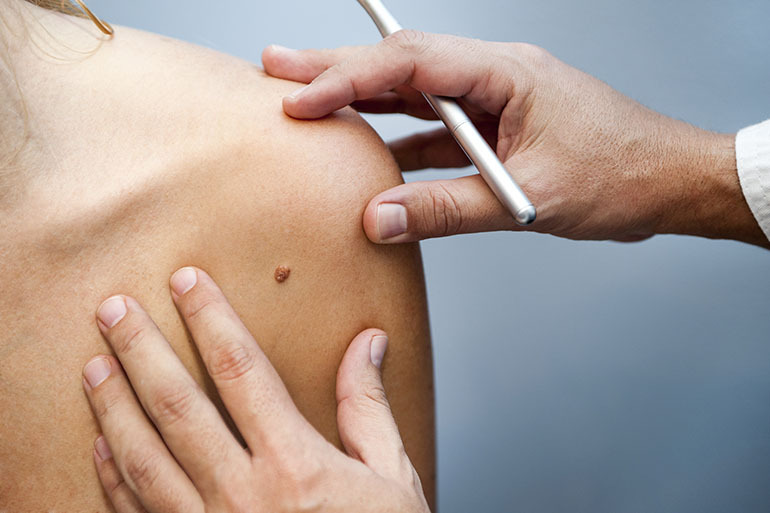For years, many dermatologists have urged patients to have a full-body visual check for skin cancer. But a new report by a panel of medical experts concluded for the second time in seven years that there is not enough evidence that these screenings benefit patients to recommend them as a preventive service.
In a review published Tuesday in JAMA, the U.S. Preventive Services Task Force updated its 2009 review of visual skin cancer exams, but still issued an “I” rating, which means “the current evidence is insufficient to assess the balance of benefits and harms.”
Dr. Michael Pignone, a task force member and chair at the Dell Medical School at the University of Texas at Austin, emphasized that this finding does not mean screenings have no benefit and no harm. “It’s a statement that the evidence isn’t good enough,” he said.
The task force, an independent volunteer panel of medical experts, reviews current scientific evidence for specific preventive services and makes recommendations about that services’ effectiveness for patients who don’t have obvious symptoms or aren’t at high risk.
Their findings are important because, under the health law, services that the task force assigns an “A” or “B” grade must generally be covered by health plans, including Medicare, without charging consumers anything out of pocket.
The panel conducted a systematic review of 13 studies to analyze the screening’s ability to reduce deaths caused by melanoma, possible harms that result from biopsies and whether the exam leads to earlier detection of skin cancer.
Its rating comes even as skin cancer rates continue to climb. According to the latest data from the Centers for Disease Control and Prevention, skin cancer is the most common cancer in the U.S. More than 9,000 U.S. adults died in 2013 from melanoma, a rare but highly aggressive form of skin cancer. In the same year, nearly 74,000 were diagnosed with some form of the disease.
Just as the 2009 “I” determination triggered dissent within the medical profession, Tuesday’s updated rating was accompanied by editorials ranging from support to concern and even criticism.
In one opinion published in JAMA Oncology, a trio of physicians decried the rating, claiming the recommendation “downplays” the importance of the visual screening procedure. The USPSTF’s methods of analysis were “too restrictive,” the doctors wrote, pushing instead for a higher rating to “emphasize screening as a part of regular physical examinations.” They also suggested that the visual exam could be targeted to patients based on age and sex. The also noted that, while questions persist about screening, “Current mortality from melanoma cannot be ignored.”
Editorials published in JAMA and JAMA Dermatology took a different view, highlighting the report’s findings as an “invitation” for more research on the harms and benefits of visual skin cancer screening. They also emphasized the need to better educate doctors about skin cancer and standardize how screenings are administered.
“Being able to pick up a melanoma early, just from looking at it, is a lifesaving procedure on its own,” said Dr. Hensin Tsao, director of the Melanoma Center and Pigmented Lesion Center at Massachusetts Hospital and co-author of the JAMA editorial.
But, he concluded, its value is hard to prove.
Pignone and Tsao don’t foresee doctors substantially changing their services in response to the rating, but Tsao said it could recast screenings from being considered “part of a general check-up” to a “diagnostic exam.” That means the service must meet a higher threshold to prove its effectiveness.
For now, Pignone said the lack of scientific information places the onus on individuals to choose the best course of action for their health, and on the scientific community to come up with evidence to identify the best strategies.
“It’s challenging to get good evidence and this is a case where we have to meet that challenge,” Pignone said.
This story was produced by Kaiser Health News, an editorially independent program of the Kaiser Family Foundation.


